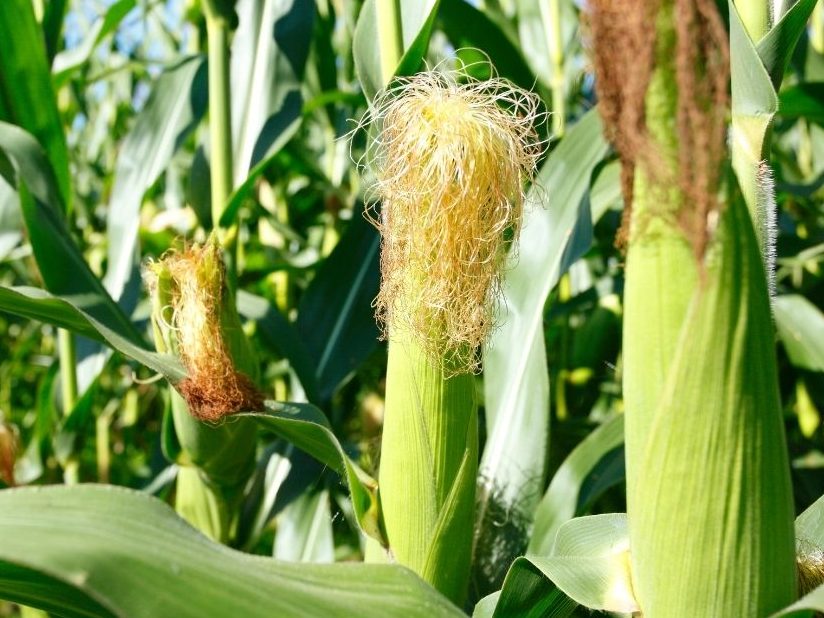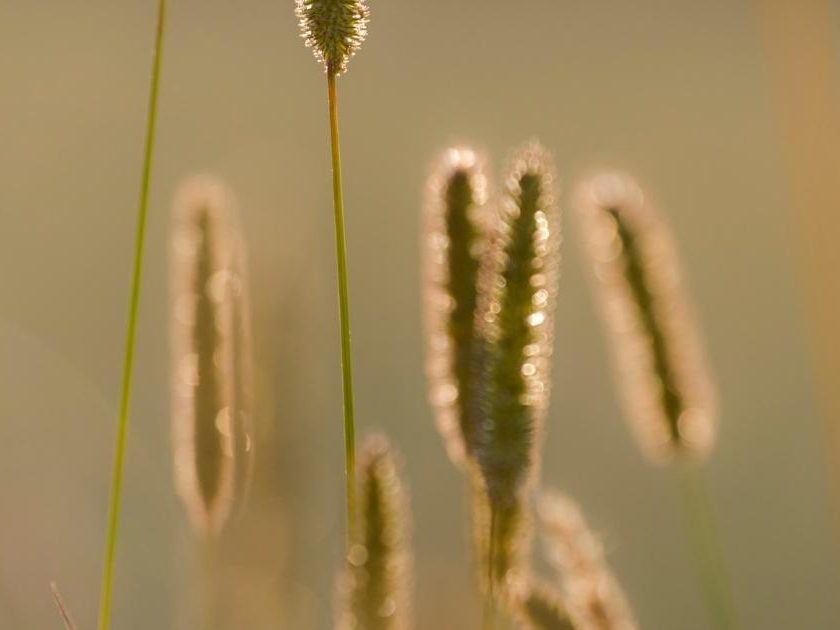
Commercial Field Crop Insect Management
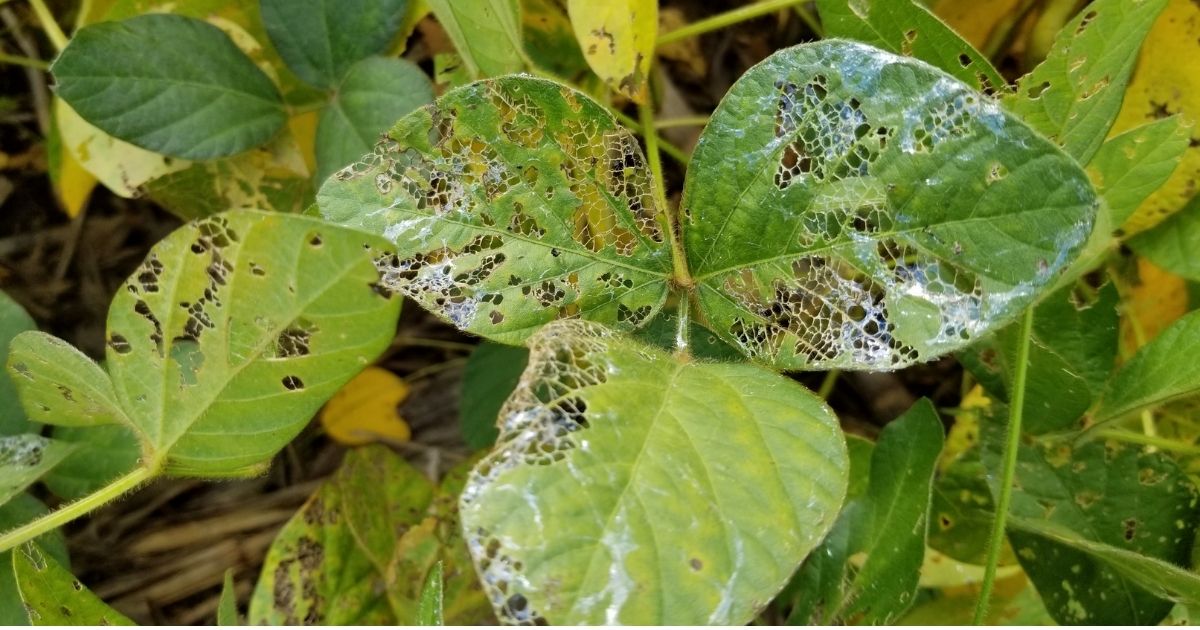
Commercial Field Crop Insect Management
Guidelines and Recommendations
General Pest Management
- Slugs in Field Crops
- Stored Grain Insect Management
- Nematodes — The University of Delaware no longer offers an open nematode assay service.
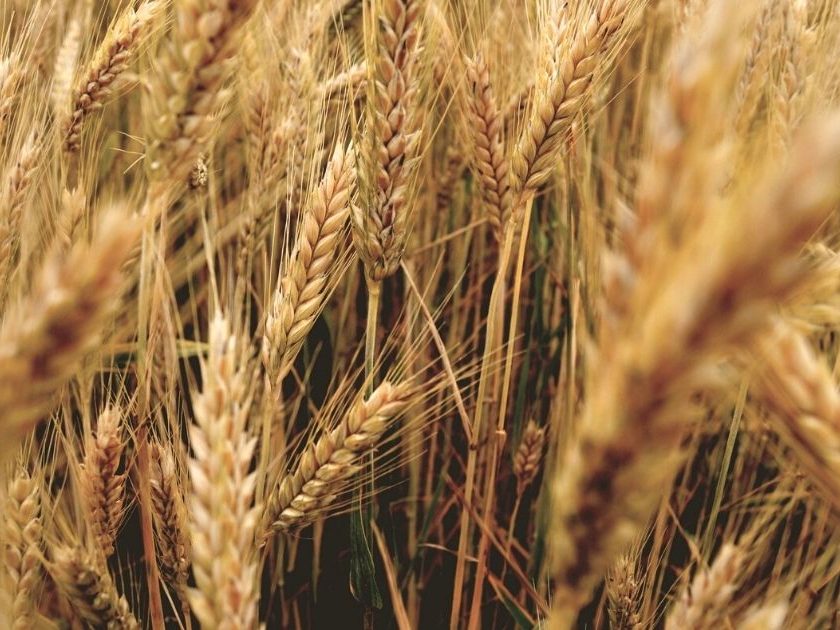
Sampling Guidelines
Sampling Guidelines
| Growth Stage: Seedling (fall), Tillering – Boot Stage (spring) | |||
| Pest | Sampling Method | ||
| Aphids | In the fall, examine 1 linear foot of row in 10 sites; estimate the number of aphids per foot of row | ||
| Cereal leaf beetle | In the spring, begin checking for eggs and small larvae on 10 tillers/stems at 10 sites throughout a field, count the number of eggs and larvae per 100 tillers | ||
| Growth Stage: Head Emergence to Harvest | |||
| Aphids | Examine 10 grain heads in 10 sites until the early dough stage, count the number of aphids per head, also note beneficial insect activity | ||
| Cereal leaf beetle | Examine 10 stems in 10 locations through the early dough stage for larvae and estimate percent defoliation | ||
| True Armyworm | Starting in early May, examine 5 linear foot of row in 10 sites for the presence of larvae, be sure to examine the area at the base of the plants as well as under crop debris and weeds since the larvae are nocturnal. | ||
| Grass Sawfly | For initial detection in late April – early May, take 5 sweeps in 5 sites especially along field margins; Once larvae are detected examine five linear foot of row in 10 sites for the presence of larvae; Since larvae feed on the plants during the day, shake the plants in the 5 linear foot of row to dislodge larvae from the plants into the row middles. | ||
Insect Thresholds
| Growth Stage: Seedling (fall), Tillering – Boot Stage (spring) | |||
| Pest | Sampling Method | ||
| Aphids | In the fall, examine 1 linear foot of row in 10 sites; estimate the number of aphids per foot of row | ||
| Cereal leaf beetle | In the spring, begin checking for eggs and small larvae on 10 tillers/stems at 10 sites throughout a field, count the number of eggs and larvae per 100 tillers | ||
| Growth Stage: Head Emergence to Harvest | |||
| Aphids | Examine 10 grain heads in 10 sites until the early dough stage, count the number of aphids per head, also note beneficial insect activity | ||
| Cereal leaf beetle | Examine 10 stems in 10 locations through the early dough stage for larvae and estimate percent defoliation | ||
| True Armyworm | Starting in early May, examine 5 linear foot of row in 10 sites for the presence of larvae, be sure to examine the area at the base of the plants as well as under crop debris and weeds since the larvae are nocturnal. | ||
| Grass Sawfly | For initial detection in late April – early May, take 5 sweeps in 5 sites especially along field margins; Once larvae are detected examine five linear foot of row in 10 sites for the presence of larvae; Since larvae feed on the plants during the day, shake the plants in the 5 linear foot of row to dislodge larvae from the plants into the row middles. | ||
Sampling Guidelines
Sampling Guidelines
| Growth Stage: Pre-Planting | |
| Pest | Sampling Method |
| White grub, Wireworm | Sample one square foot of soil 12 inches deep; one sample should be taken for each 10 acres with a minimum of 5 sites per field; field should not be tilled before samples are taken and soil temperature at 6 inches should be 45-50 degrees F. |
| Growth Stage: Emergence to Early Whorl | |
| Cutworms | Examine 10 plants in 10 locations for the presence of leaf feeding (small irregular holes) and cut plants; also look for live cutworms and estimate the average size of the larvae |
| Slugs | Examine 10 plants in 10 locations for the presence of feeding damage and slime trails; you will need to observe plants at night or during cloudy conditions to actually observe slugs feeding in plants; be sure to also check for slugs under surface trash and in open seed slots |
| Flea beetles, Cereal leaf beetle, and European corn borer | Examine 10 plants in 10 locations, count the number of beetles per plant and percent plants infested for the two beetles; count the percent infested plants for European corn borer, pull the whorls our of 5-10 plants per field to determine the size of ECB larvae as well as the average number per plant |
| Growth Stage: Mid-Whorl – Tassel Emergence | |
| Stalk borer, True Armyworm, European corn borer, Corn Earworm, Fall Armyworm | Examine 10 plants in 10 locations and count the percent infested plants |
| Growth Stage: Silking | |
| Corn rootworms | Count the number of beetles on 5 plants in 10 locations |
Insect Thresholds
Growth Stage |
|||
| Pest | Preplant | Emergence to 4 leaf stage | 5 leaf stage to silking |
| White Grubs | 1 per sq. ft. | ||
| Wireworms | 1 per sq. ft. | ||
| Slugs | 3 per sq. ft. | 3-5 per plant | |
| Cutworms | 1-2 leaf – 3% cut or 10% feeding damage 2-4 leaf – 5% cut and larvae present | ||
| Corn flea beetle | 5-6 per plant and 50% plants damaged | ||
| Common stalk borer | 2 leaf – 4% infested plants 3 leaf – 6% infested plants 4 leaf – 10% infested plants |
||
| European corn borer | 50% plants infested (irrigated)80% plants infested (non-irrigated) | 50% plants infested (irrigated)80% plants infested (non-irrigated) | |
| True armyworm | 25% plants infested and larvae < 1″ | 25% plants infested and larvae < 1″ | |
| Cereal leaf beetle | 10 per plant and 50% plants damaged | ||
| Fall armyworm | 75% plants infested with 1 worm or 50% plants with 2 or more worms | ||
| Northern corn rootworm * | 2 adult beetles per plant | ||
| Western corn rootworm * | 1 adult beetle per plant | ||
* if both present – divide number of northern corn rootworms by two and add to number of western corn rootworms
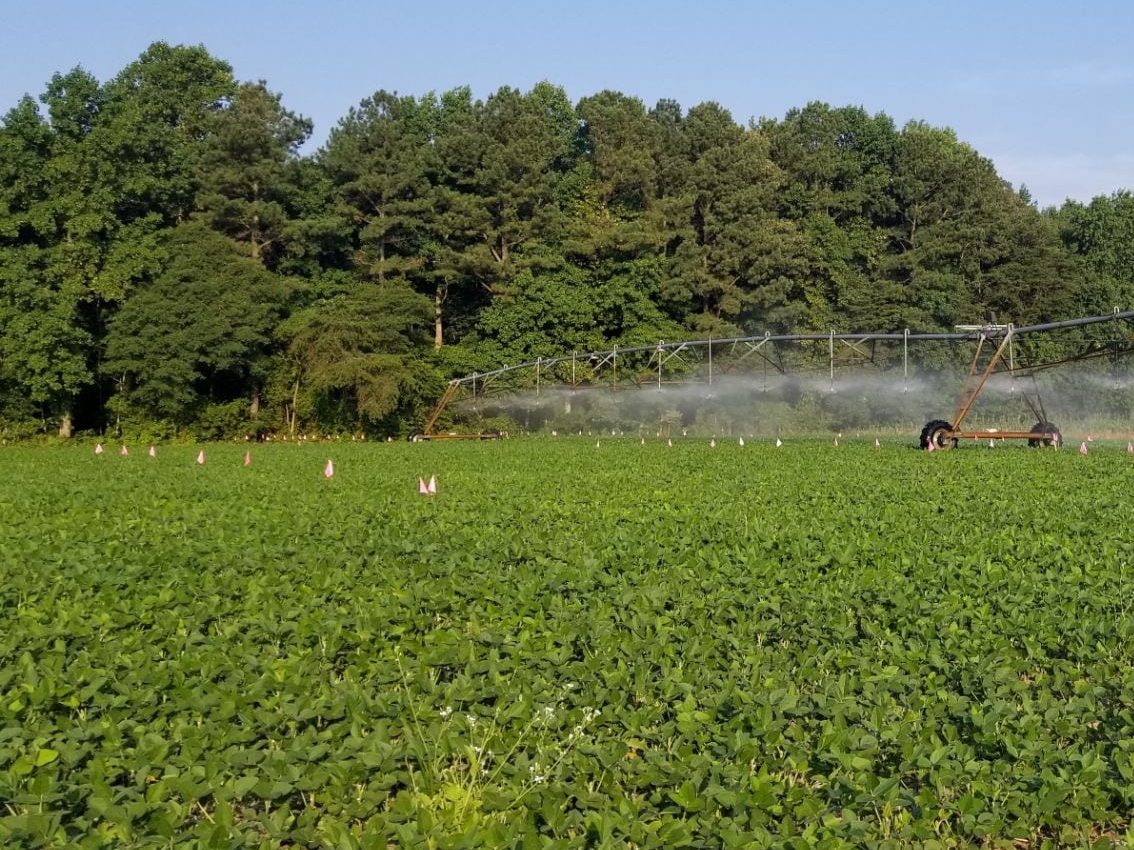
Sampling Guidelines
Sampling Guidelines
| Pest | Sampling Method |
Growth Stage: Seedling to Pre-Bloom |
|
| Bean Leaf Beetle, Mexican Bean Beetle | Using a drop cloth placed between 2 rows, shake the plants in 6 foot row in 10 sites in a field, count the number of beetles found in 6 foot of row in each site, for Mexican bean beetle note the presence of pupae/eggs at each site, estimate defoliation at each site |
| Grasshoppers | Take 10 sweeps in 10 sites and count the number of adults and nymphs |
| Thrips | Examine 5 leaflets in 10 sites for the presence of thrips, check top and undersides of the leaves |
| Potato Leafhopper | Take 10 sweeps in 10 sites and count the number of adults and nymphs per 100 sweeps, sampling should be done when the foliage is dry |
| Growth Stage: Prebloom – Podset | |
| Japanese beetle, Green Cloverworm, Silver Spotted Skipper | Using a drop cloth placed between 2 rows, shake the plants in 6 foot of row in 10 sites in a field, count the number of insects found at each site and estimate defoliation |
| Spider Mites | Examine the underside of 5 leaflets in 10 sites for mites; also note the presence of mite eggs and note that amount of damage |
| Growth Stage: Podset – Maturity | |
| Spider Mites | 5 leaflets in 10 locations |
| Bean leaf beetle, Mexican bean beetle, Green cloverworm, Silver Spotted Skipper, Yellow Striped Armyworm, Beet Armyworm, Fall Armyworm | 6 foot of row in 10 sites using a drop cloth |
| Corn Earworm | 5 sweeps in 5 to 10 locations walking down the row |
Insect Thresholds
| Pest | Sampling Method |
Growth Stage: Seedling to Pre-Bloom |
|
| Bean Leaf Beetle, Mexican Bean Beetle | Using a drop cloth placed between 2 rows, shake the plants in 6 foot row in 10 sites in a field, count the number of beetles found in 6 foot of row in each site, for Mexican bean beetle note the presence of pupae/eggs at each site, estimate defoliation at each site |
| Grasshoppers | Take 10 sweeps in 10 sites and count the number of adults and nymphs |
| Thrips | Examine 5 leaflets in 10 sites for the presence of thrips, check top and undersides of the leaves |
| Potato Leafhopper | Take 10 sweeps in 10 sites and count the number of adults and nymphs per 100 sweeps, sampling should be done when the foliage is dry |
| Growth Stage: Prebloom – Podset | |
| Japanese beetle, Green Cloverworm, Silver Spotted Skipper | Using a drop cloth placed between 2 rows, shake the plants in 6 foot of row in 10 sites in a field, count the number of insects found at each site and estimate defoliation |
| Spider Mites | Examine the underside of 5 leaflets in 10 sites for mites; also note the presence of mite eggs and note that amount of damage |
| Growth Stage: Podset – Maturity | |
| Spider Mites | 5 leaflets in 10 locations |
| Bean leaf beetle, Mexican bean beetle, Green cloverworm, Silver Spotted Skipper, Yellow Striped Armyworm, Beet Armyworm, Fall Armyworm | 6 foot of row in 10 sites using a drop cloth |
| Corn Earworm | 5 sweeps in 5 to 10 locations walking down the row |
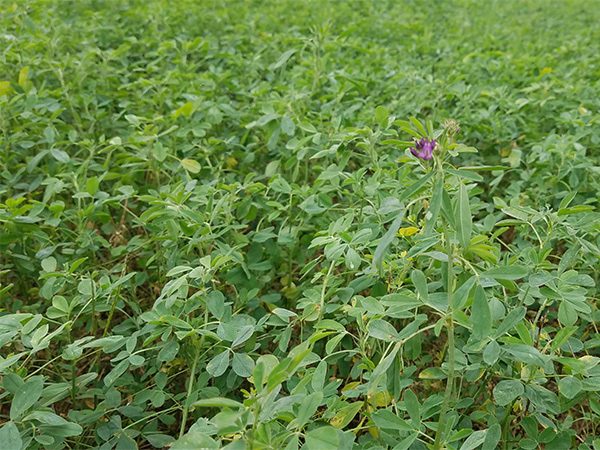
Sampling Guidelines
Sampling Guidelines
Pest |
Sampling Method |
| Growth Stage: Mid- March to First Cutting | |
| Alfalfa weevil | Minimum of 30 stems per field collected in a W-pattern, place stems top first in bucket, measure stem height and count the number of larvae per stem |
| Pea aphid | Collect a minimum of 30 stems per field and count the number of aphids and beneficial insects present per stem ( e.g. lady beetles and syrphid fly larvae ) |
| Growth Stage: After First Cutting (mid-May) to September | |
| Alfalfa weevil – only for 2 weeks after first cutting | Minimum of 30 stems/crowns per field in a W-pattern, place stems top first in bucket and count the number of larvae per stem/crown |
| Potato leafhopper | Ten sweeps in ten locations – plants should be dry |
| Blister Beetle | 10 sweeps in ten locations< |
| Garden webworm and other defoliators | Estimate defoliation in 10 location |
Alfalfa Insect Thresholds
| Pest | March – April | May – early June | mid June – mid Sept. |
| Alfalfa weevil | 0-11 in. – 0.7 per stem12 in. – 1.0 per stem 13-15 in. – 1.5 per stem 16 in. – 2.0 per stem 17-18 in. – 2.5 per stem |
0-11 in. – 0.7 per stem12 in. – 1.0 per stem 13-15 in. – 1.5 per stem 16 in. – 2.0 per stem 17-18 in. – 2.5 per stem after 1st cutting – 2 per crown |
|
| Pea aphid | <10 in. – 50 per stem>10 in. – 100 per stem 1 or more beneficials per 50 aphids should provide control |
<10 in. – 50 per stem>10 in. – 100 per stem 1 or more beneficials per 50 aphids should provide control |
|
| Potato leafhopper | 3 in. or less – 20 per 100 sweeps4-6 in. – 50 per 100 sweeps 7-11 in. – 100 per 100 sweeps 12 in. or more – 150 per 100 sweeps |
3 in. or less – 20 per 100 sweeps4-6 in. – 50 per 100 sweeps 7-11 in. – 100 per 100 sweeps 12 in. or more – 150 per 100 sweeps |
|
| Garden webworm / general defoliators | 25-30% of tips damaged | ||
| Blister beetles | 1 per sweep |
Program contacts
Learn more
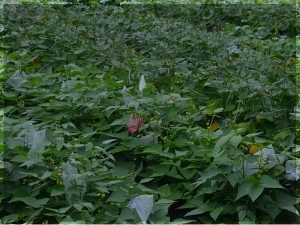
Variety Trials

